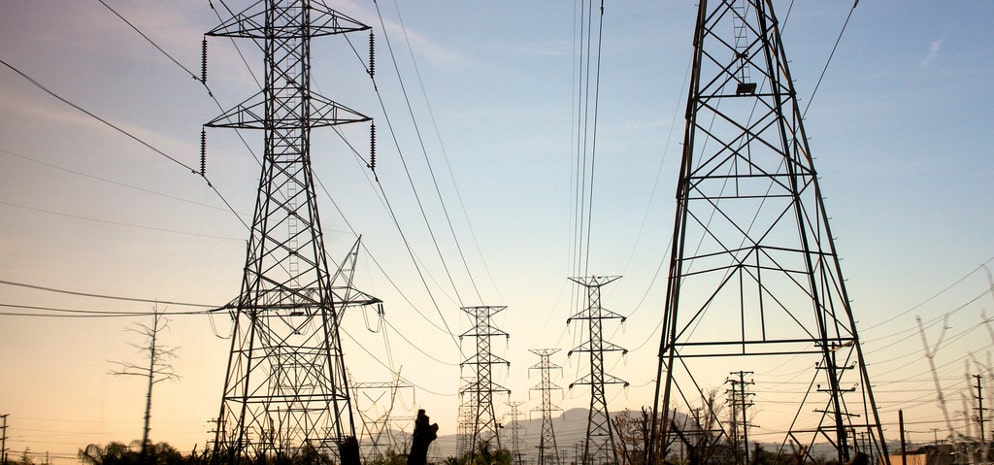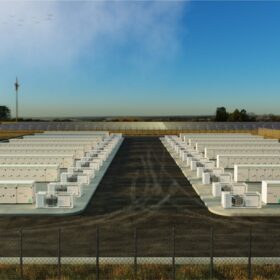At least 23 U.S. utilities have tested the ability of distributed energy resource management systems (DERMS) to capture the value to the grid of solar and storage systems.
Meanwhile, in Western Australia, up to 50,000 distributed solar and storage systems will be controlled in a management system developed by PXiSE, a division of Sempra Energy.
That contract with Western Australia’s utility shows that a DERMS platform (sometimes called a virtual power plant) can move beyond the test phase to full-scale operations.
Back in the U.S., the National Renewable Energy Laboratory (NREL) selected five utility-led DERMS projects to profile, all of which incorporated PV and storage, in its report Expanding PV Value: Lessons Learned from Utility-led Distributed Energy Resource Aggregation in the United States.
Pacific Gas & Electric demonstrated, for example, that its DERMS platform “could coordinate DERs participating in both distribution and wholesale markets.” NREL notes that “DER aggregation could enable utilities and end users to access new value streams” for PV and storage.
A distributed energy management system requires a communication software platform, communication-capable hardware, and DERs that can be remotely controlled, says the NREL report.

Here are snapshots of the five DER aggregation projects profiled in NREL’s report, with some lessons learned.
Pacific Gas & Electric: PG&E launched a San Jose DERMS program in 2016, with a proof-of-concept DERMS platform developed by GE, and two DER aggregators, Tesla and Green Charge Network. The aggregated DERs included 124 kW of residential PV, 66 kW of storage across 27 homes, and 360 kW of storage across three commercial sites.
NREL reports that the DERMS platform has “predicted capacity constraints and voltage violations on the system and dispatched DERs to mitigate these issues;” Figure 8 illustrates the capacity response.
The DERMS demonstrated capability to “maximize DER performance for distribution and wholesale markets,” reports NREL, by aggregating similar assets into “nodes” and deploying the nodes to provide grid services.
PG&E sources told NREL they had challenges, given the two aggregators, in incorporating different sets of communications standards within the DERMS platform. The NREL report advised that scaling of future DERMS programs would benefit from further standardization of protocols and operational practices.
PG&E sources also noted that San Jose lacked standardized and streamlined permitting for battery storage. They also noted challenges with inconsistent residential internet connections used to communicate between PG&E and the DERs.
Green Mountain Power: GMP partnered in 2016 with a builder and the battery maker Sonnen to add a 6-kW PV array and a 4 kW/6 kWh battery to each of seven net-zero duplex homes (two units each), each with heat pump heating and water heating. GMP communicated with the battery systems via a DERMS platform developed by Virtual Peaker.
GMP dispatches the battery fleet for two hours aligned with typical peak demand events for ISO New England, resulting in an aggregate demand reduction of 44.65 kW. The project has also achieved some incremental deferral of transmission and distribution upgrade expenses.
GMP sources reported that communications between the battery systems and the DERMS platform was problematic.
Southern California Edison: Since 2014, SCE has been adding utility-procured resources to its Preferred Resources Pilot—a DERMS program that will grow to 256 MW of capacity, including 51 MW of PV and 67 MW of storage. (The balance of the capacity is in two areas—demand response and energy efficiency and permanent load shift—and includes existing distributed combined heat and power capacity.) SCE plans to upgrade its DERMS platform by 2022.
NREL’s sources at SCE recommended that a utility acquire DERs to meet the specific resource attributes needed, rather than specify a technology such as PV or storage.
Sacramento Municipal Utility District: In 2014, SMUD’s pilot DERMS program—involving 34 new homes with PV, storage, and a smart thermostat—demonstrated that it could manage load shifting, fleet operation in aggregate, power quality, PV firming, and regulation.
Residents of ten of the homes agreed to allow SMUD to control their DERs. For those homes, on 12 of the highest peak demand days, SMUD directed the battery to store mid-day PV generation and discharge that electricity during the peak late afternoon hours. Also, the smart thermostat was controlled to pre-cool the house before the peak hours, and reduce air conditioning load during peak hours. On those peak days, the average home provided 2.66 kW of demand savings, with nearly all of that from the PV and battery combination.
Sources at SMUD told NREL that it was difficult to identify cost-effective pathways to manage integration and data exchange across the utility and third-party platforms, and suggested that open communication platforms would be preferable.
Maui Electric Company: From 2011-2016, MECO evaluated a DERMS, developed by Hitachi, that managed 80 bidirectional EV chargers and 10 smart inverters for rooftop PV systems.
EVs that were connected to the grid when called upon charged during off-peak time, when wind generation was highest, and reduced charging or were discharged at peak hours, providing a maximum of 3 kW of peak load reduction. The 10 PV systems with smart inverters provided voltage support in response to voltage signals from a local transformer.
NREL’s report also provided concluding lessons learned, in five categories.
Communicating with DERs: Four of the five utilities faced communications challenges with DERs, said NREL. These included faulty equipment, the need to reset equipment manually, and failures in the communications chain between a DER, its aggregator, and the utility. Even with consistent communication, three utilities reported issues with the data they received. NREL suggested that utilities consider these challenges when evaluating which DERs to include in a program, and when developing data-communications requirements for DERs to receive compensation.
DERMS development and implementation: NREL concluded that: 1) a DERMS is essential to DER aggregation; 2) phasing in DERMS functionality, as Green Mountain Power and Pacific Gas & Electric did, can ease the challenges of developing a DERMS; 3) the need for a DERMS platform to interact with a DER aggregator’s software adds complexity, which may be eased over time due to technology innovation; 4) integrating disparate DER technologies will be facilitated with open communications standards, such as the IEEE 2030.5 Standard for Smart Energy Profile Application Protocol.
Customer acquisition: NREL’s common-sense advice to utilities was to provide customers a reasonable compensation to gain their participation, and to adequately explain the program to customers before they sign up.
Battery storage deployment: NREL noted that two California utilities faced battery permitting challenges (the Sacramento Municipal Utility District and PG&E), suggesting that utilities and aggregation partners may want to work with local permitting authorities to address those challenges early on. Consolidated Edison in New York City has also faced this challenge, said NREL, and in response the New York State Energy Research and Development Authority is financing the development of model codes for energy storage.
DER performance: SMUD found that smart thermostats offered inconsistent demand response, and had insufficient data to diagnose the problem. The Maui Electric Company learned about patterns of EV availability—i.e., the proportion of EVs likely to be plugged into the grid at each hour.
This content is protected by copyright and may not be reused. If you want to cooperate with us and would like to reuse some of our content, please contact: editors@pv-magazine.com.








By submitting this form you agree to pv magazine using your data for the purposes of publishing your comment.
Your personal data will only be disclosed or otherwise transmitted to third parties for the purposes of spam filtering or if this is necessary for technical maintenance of the website. Any other transfer to third parties will not take place unless this is justified on the basis of applicable data protection regulations or if pv magazine is legally obliged to do so.
You may revoke this consent at any time with effect for the future, in which case your personal data will be deleted immediately. Otherwise, your data will be deleted if pv magazine has processed your request or the purpose of data storage is fulfilled.
Further information on data privacy can be found in our Data Protection Policy.